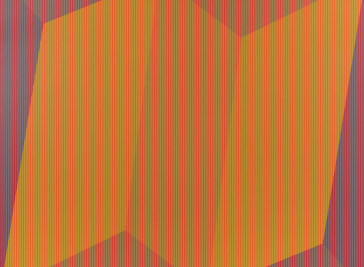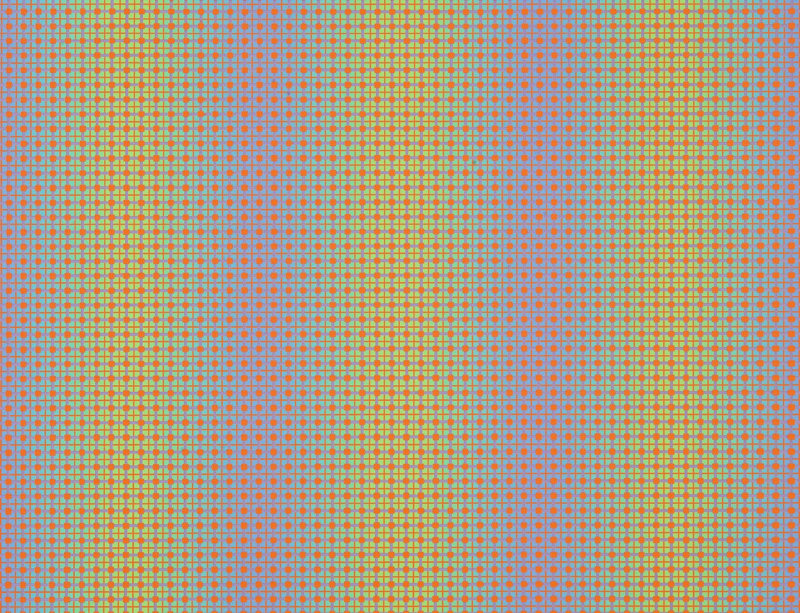

It’s a special treat to look back at Julian’s work from the early 70s – a period of singular fruitfulness and creative reward.
The 1950s constituted for Julian a diligent quest: learning, acquiring skills, gaining perspective on art history and understanding its manifestations through time and technique. He slowly gained confidence in his own ability to think, to do, to understand, and to evoke responses in the viewer. This decade was filled with the excitement and novelty of discoveries, technical experimentation, personal provocation and trials and errors.
The decade of the 1960s found Julian standing on his own feet: still questioning the pragmatism of his creative vocation, but sensing deeply the power of his personal visual language.
The 1970s – especially the early years of that decade – were a thrill, an exuberant adventure. For the first time Julian felt self-assured and in control of his life. The future looked positive: he had a healthy, happy little family and a permanent job that probed his mind and solidified his personal philosophy of visual communication. His gallery in New York, the Martha Jackson Gallery, was supportive of his vision and successful in promoting his paintings worldwide. Julian was living a dream that he had never dared to dream.
Julian was now breathlessly pushing forward into the world of color and light. It was as if he was intoxicated with his ideas and the endless visual possibilities ahead of him.
The first big step forward was in scale. He dared to be big, to make a bold statement, to make it clean and simple and obvious for all to see. With scale came power, power to communicate and not hide from your own convictions. Now Julian tested his power to stimulate sensations in others and to provoke responses and emotional impact. He scrupulously examined these responses in himself and in others, fine-tuning them to his expressive desire.
The early 1970s saw some of Julian’s largest, most powerful, purest work ever. Being a perfectionist by nature, Julian strove to perfect his technical bravura. Since color was his priority, nothing should stand in the way of pure color perception. The canvas support had to become almost invisible, and the color application textureless, showing no brush marks or the artist’s hand.
Julian relied now exclusively on the use of tape to separate color from color without the detail or attention to “curious” imperfection. Using different commercial tapes for different kinds of forms/rhythms, and then cutting the tapes to the desired sizes from 1/16th to 1/8th to 1/4th inch, Julian gained a precise vocabulary of visual possibilities for optical mixing.
Tape also allowed for the physical build-up of color pigment. The more layers of paint, the deeper and more even the colorant – as light enters the surface and bounces back to the viewer’s eye. The paint also became more archival as multiple layers prevented other wavelengths from interpenetrating and affecting the visual impact over time.
By the early 1970s, Julian had gained mastery over his technical as well as his philosophical parameters; his visual language was solidified. With trust in his visual language and an exciting content to communicate, Julian went to work. The vessels for his colors were simple geometric shapes: circles, bands, ribbons, folds, squares – uninteresting in themselves, but unselfish in offering themselves up for the sake of the weighty color content. By varying the distribution of lines over the colored shapes, colors are forced into a dialogue with one another: sweet-talking, arguing, conversing, reflecting…. This interaction intensifies the colors, often setting up vibration on the edges that do not allow the eye to rest. Instead of physically mixing and dispersing pigments, the colors of lines and ground are mixed in “mid- air” – the intangible space between the canvas and the viewer’s eye. The amazing byproduct of this relationship is the sensation of light. As Albers had noted: physical mixtures subtract from light; optical mixtures increase/add light.
Julian took pleasure in this experience, and from 1970-75 he experimented tirelessly to provoke ever more daring and surprising relationships.
The first “primal” experiences Julian dealt with in his new paintings were based on vertical lines – verticality being the response to our own physical equilibrium. Vertical lines, he would say, emit a feeling of stoicism, a directness, solidity and security of presence. Verticality offers confrontation while horizontality tends to evade spatial stability; it remains evasive in its position.
Julian went on to experiment with the interlocking of vertical and horizontal line, creating the grid with its immutability of action. The grid gives the feeling of security, logic and stability. Diagonal and wave-like arrangements of lines offered a great variety of sensations: physically, psychologically as well as emotive memory associations.
For Julian, the edges of shapes carried the maximum of visual energy. While squares insist on frontality, oblique shapes suggest foreshortening in space. Julian often invites the viewer into his paintings by providing shapes that are familiar, comfortable, and then folds these shapes, flipping and twisting them in pictorial space. In some paintings, these folds are logical, paralleling our experience; in others, the shapes are contrary to logic and physical reality. The viewer follows the magician’s lead into space and then scrambles back to known reality, feeling cheated or delighted by the adventure, repeating the illusionary trip over and over again.
In the realm of art, Julian became a magician! Julian had the power of color at his fingertips, spinning webs of illusion and intrigue. The viewer is taken for a voyage, a visual adventure, an emotive experience. Julian’s art demands seeing the world anew; letting go of the known, floating into the unknown and trusting the artist to offer a soft landing. Julian held in his mind’s eye a particular experience, a special treat for the observant viewer, and he painted in order to share his personal delight and vision.